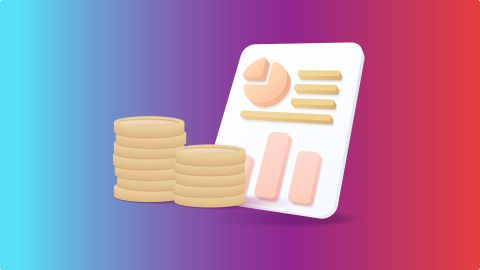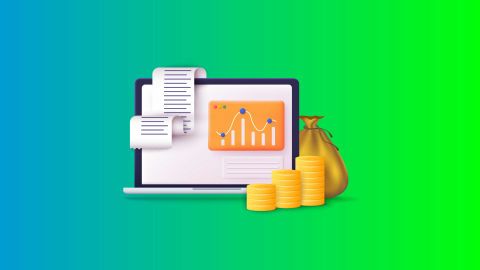In the Union Budget of 2020, the Indian government introduced a new tax regime, allowing taxpayers to choose the most suitable option. Here are the income tax slabs for FY 24-25 under the new regime and the old regime:
| Annual income |
New tax regime |
Old tax regime |
| Up to Rs. 2.5 lakh |
NIL |
NIL |
| Rs. 2.5 lakh - Rs. 5 lakh |
5% |
5% |
| Rs. 5 lakh - Rs. 7.5 lakh |
10% |
20% |
| Rs. 7.5 lakh - Rs. 10 lakh |
15% |
20% |
| Rs. 10 lakh - Rs. 12.5 lakh |
20% |
30% |
| Rs. 12.5 lakh - Rs. 15 lakh |
25% |
30% |
| Above Rs. 15 lakh |
30% |
30% |
Slab rates under the old tax regime as per budget 2024
Here are the rates under the old tax regime as per budget 2024:
| Income Range |
Rate |
| Up to Rs. 2.5 lakh |
NIL |
| Rs. 2.5 lakh - Rs. 5 lakh |
5% |
| Rs 5 lakh - Rs. 10 lakh |
20% |
| Above Rs. 10 lakh |
30% |
Slab rates under the new tax regime as per budget 2024
Here are the tax rates under the newly introduced tax regime as per budget 2024:
| Income range |
Rate |
| Up to Rs. 3 lakh |
NIL |
| Rs. 3 lakh - Rs. 6 lakh |
5% |
| Rs. 6 lakh - Rs. 9 lakh |
10% |
| Rs. 9 lakh - Rs. 12 lakh |
15% |
| Rs. 12 lakh - Rs. 15 lakh |
20% |
| Above Rs. 15 lakh |
30% |
Salary exemptions permitted under income tax
Various salary components qualify for tax exemptions, as outlined below:
S.No.
|
Salary Component
|
Taxability
|
1
|
Basic salary
|
Fully taxable
|
2
|
Dearness allowance
|
Fully taxable
|
3
|
HRA (House Rent Allowance)
|
Partially exempt, up to a specified limit
|
4
|
LTA (Leave Travel Allowance)
|
Exemption on travel costs for 2 trips in 4 years, as per Section 10(5)
|
5
|
Mobile/Internet allowance
|
Exempt if primarily used for office purposes, with submitted bills as proof
|
6
|
Children's education allowance
|
Rs 4,800 per child, for a maximum of 2 children
|
7
|
Food allowance
|
Rs. 50 per meal, with a maximum of 2 meals per day
|
8
|
Standard deduction
|
Rs. 50,000 for all taxpayers, without any restrictions
|
9
|
Professional tax
|
Varies by state, typically around Rs 2,400
|
Salary deductions permitted under income tax
Deductions available under the old tax regime are:
| Section 80D - health insurance premium |
Rs. 25,000 for self, spouse, and dependent children.Rs. 50,000 if above 60 years of age.Parents: Rs. 25,000 and Rs. 50,000 if above 60 years of age. |
| Section 80 E-education loan |
Deduction for 8 years from the year of repayment of education loan taken for self, spouse, dependent children, or for a student for whom the individual is a legal guardian. |
| Section 80G - donating to charity |
50% of 100% of the donated amount for notified institutions. |
| Section 80C investing in tax saving instruments |
Tax benefits up to Rs. 1.5 lakh. Some investing options include: - Public Provident Fund (PPF) - Employees’ Provident Fund (EPF) - Equity Linked Saving Scheme funds (ELSS)- Home loan repayment and Stamp duty - Sukanya Smriddhi Yojana (SSY)- National Savings Certificate (NSC)- Fixed Deposit for 5 years, and more |
| Section 80DD- costs to treat disabled dependents |
If you bear the medical cost for disabled dependants, you are eligible for tax relief: - 40% disability: Rs. 75,000 - 80% or severe disability: Rs. 1.25 lakh |
| Home loan payments |
Principal amount: Up to Rs. 1.5 lakh u/s 80CInterest amount: Up to Rs. 2 lakh paid under section 24b |
| The maturity amount of a Life Insurance Policy |
You can take a tax benefit on the maturity proceeds if the sum assured is less than: - 20% for policies issued before 1 April 2012 - 10% for policies issued after 1 April 2012 - 15% for policies issued after 1 April 2013 for a person with a disability. |
How to save taxes on a 10 lakh salary?
Understanding how to save tax for a salary above Rs. 10 lakh is important to reduce your tax liability. Saving taxes on a Rs. 10 lakh annual salary involves leveraging various deductions, exemptions, and investment options available under the Indian Income Tax Act. Here is a detailed guide:
- Understand your tax liability: Review your total earnings in the financial year and ensure you understand which tax slab will apply. Also, review your investments and earnings from other sources to get a better idea of your tax liability.
- ITR form: There are numerous ITR forms available for various types of individuals. Review and understand which ITR form applies to you based on the nature of your earnings.
- Tax deductions: Sections such as 80C provide tax deductions up to Rs. 1.5 lakh. Ensure that you properly understand eligible tax deductions to reduce your tax liability as much as possible. These deductions are the best options to save tax on a Rs. 10 lakh salary.
How is tax liability calculated under the old tax regime?
Here is how tax liability is calculated under the old tax regime:
| Particulars |
Amount (in Rs.) |
| Gross salary |
10,00,000 |
| Less: Standard deduction |
50,000 |
| Net Salary after standard deduction |
9,50,000 |
| Less: Section 80C deductions |
1,50,000 |
| Net Salary after section 80C |
8,00,000 |
| Less: Section 80D deductions |
25,000 |
| Net Salary after section 80D |
7,75,000 |
| Less: Section 80TTA deductions |
10,000 |
| Net Salary after section 80TTA |
7,65,000 |
| Less: Section 24(b) deductions |
2,00,000 |
| Net Taxable income |
5,65,000 |
| Less: Additional NPS contribution (Section 80CCD(1B)) |
65,000 |
| Final taxable income |
5,00,000 |
| Tax calculation |
Amount (in Rs.) |
| Income up to Rs. 2.5 lakh |
NIL |
| Income from Rs. 2.5 lakh - Rs. 5 lakh |
12,500 |
| Total tax payable |
12,500 |
| Less: Rebate under section 87A |
12,500 |
| Total tax liability |
0 |
How is tax liability calculated under the new tax regime?
Here is how tax liability is calculated under the new tax regime:
| Particulars |
Amount (in Rs.) |
| Gross salary |
10,00,000 |
| Less: Standard deduction |
50,000 |
| Net salary after standard deduction |
9,50,000 |
| Net taxable income |
9,50,000 |
| Tax calculation |
Amount (in Rs.) |
| Income up to Rs. 2.5 lakh |
NIL |
| Income from Rs. 2.5 lakh - Rs. 5 lakh |
12,500 |
| Income from Rs. 5 lakh - Rs. 7.5 lakh |
25,000 |
| Income from Rs. 7.5 lakh - Rs. 9.5 lakh |
30,000 |
| Total tax payable |
67,500 |
| Cess (4% on tax payable) |
2,700 |
| Total tax liability |
70,200 |
Which regime is better for 10 lakh LPA to save tax?
Here is a detailed table for you to understand which regime is better for Rs. 10 lakh LPA:
| Particulars |
Old tax regime (in Rs.) |
New tax regime (In Rs.) |
| Gross salary |
10,00,000 |
10,00,000 |
| Less: Standard deduction |
50,000 |
50,000 |
| Net salary after the standard deduction |
9,50,000 |
9,50,000 |
| Deductions: |
|
|
| Section 80C |
1,50,000 |
Not applicable |
| Section 80D |
25,000 |
Not applicable |
| Section 80TTA |
10,000 |
Not applicable |
| Section 24(b) |
2,00,000 |
Not applicable |
| Section 80CCD(1B) |
65,000 |
Not applicable |
| Total deductions |
4,00,000 |
0 |
| Net taxable income |
5,00,000 |
9,50,000 |
| Tax calculation |
Old tax regime (in Rs.) |
New tax regime (In Rs.) |
| Income up to Rs. 2.5 lakh |
NIL |
NIL |
| Income from Rs. 2.5 lakh - Rs. 5 lakh |
12,500 |
12,500 |
| Income from Rs. 5 lakh - Rs. 7.5 lakh |
NIL |
25,000 |
| Income from Rs. 7.5 lakh - Rs. 9.5 lakh |
NIL |
30,000 |
| Income above 9.5 lakh |
NIL |
NIL |
| Total tax payable |
12,500 |
67,500 |
| Less: Rebate under section 87A |
12,500 |
Not applicable |
| Tax payable after rebate |
0 |
67,500 |
| Cess (4%) |
NIL |
2,700 |
| Total tax liability |
0 |
70,200 |
From the above side-by-side comparison, you can see that for an Rs. 10 lakh annual salary, the old tax regime is better if you can fully utilise the available deductions and exemptions, as it can bring your total tax liability to zero. The new tax regime has lower tax rates but does not offer the same level of deductions, resulting in a higher tax liability in this scenario.
Smart tax-saving techniques for a salary of Rs. 10 lakhs
One of the most important factors under how to save tax for a salary above Rs. 10 lakhs is some tax-saving techniques. Here they are:
1. Choosing the right tax regime
Review your current financial situation, determine whether you can utilise the various deductions, and decide whether to choose the old or new tax regime. If you can make use of the available deductions and exemptions, the old tax regime might be for you.
2. Maximise section 80C deductions
Section 80C is one of the most important sections for lowering your tax liability. Analyse all the available investments, such as the National Savings Certificate (NSC) and the Public Provident Fund (PPF), ELSS Mutual Funds to ensure you fully utilise the Rs 1.5 lakh deduction.
3. Take advantage of the HRA exemption
You can claim deductions for house rent allowance (HRA) if you live in a rented house. You can claim the deductions under the old tax regime by submitting rent receipts, significantly lowering your tax burden.
4. Claim 80D deductions on health insurance premiums
If you have health insurance, you can claim deductions on the premium payment under section 80D. The premium paid for yourself, your dependent children, your spouse, and your parents are eligible.
5. Utilise tax deductions on loans
If you have taken an education loan or a home loan, you can claim deductions on the interest payments under sections 80E and 24(b), respectively.
6. Consider other deductions
Numerous other deductions are available under various sections that you can use to lower your tax liability. Some deductions include investment in the National Pension Scheme under section 80CCD. Furthermore, you can donate to charitable trusts for tax deduction under section 80G.
Conclusion
If you have a Rs. 10 lakh salary, you may end up paying a high amount of tax if you do not do extensive tax planning. As there are numerous deductions and exemptions available, you can plan to utilise them to ensure you avoid paying higher taxes. Carefully review the old and new tax regimes, their tax slabs, and the deductions available to choose the most suitable one. Saving taxes can immensely help increase your savings and help you plan your financial future better.
To build wealth, you can maximise your savings and invest in numerous instruments, including mutual funds. If you are considering investing in mutual funds, look no further than the Bajaj Finserv Mutual Fund Platform. It includes numerous effective tools, such as a mutual fund calculator, which can help you compare mutual funds and invest in the most suitable mutual fund schemes.
Essential tools for mutual fund investors





